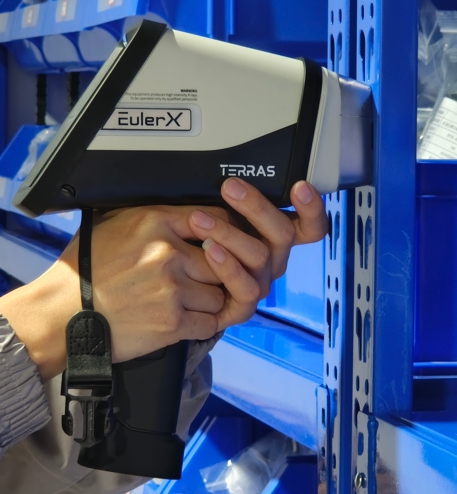
Mining
A high-tech enterprise focusing on the development and application of X-ray technology products, committed to becoming a leading supplier of X-ray industrial testing solutions.
Revolutionizing Resource Extraction: The Role of XRF Mining Technologies
The mining industry has long been a cornerstone of economic development, providing essential raw materials for various sectors. However, traditional methods of resource extraction often come with significant environmental impacts and inefficiencies. In recent years, X-ray fluorescence (XRF) technology has emerged as a game changer, revolutionizing how we approach resource extraction. This article delves into the role of XRF mining technologies and their transformative potential for the industry.

Terras EulerX500 Handheld Mining Analyzer
Understanding XRF Technology
X-ray fluorescence is an analytical technique used to determine the elemental composition of materials. It involves directing X-rays onto a sample, which causes the elements within the sample to emit secondary X-rays. By measuring these emissions, operators can identify and quantify the elements present in the sample with remarkable accuracy.
XRF technology can be applied in various mining contexts, including mineral exploration, ore grade determination, and environmental monitoring. Its versatility and precision make it an invaluable tool for modern mining operations.
Enhancing Efficiency in Resource Extraction
One of the most significant advantages of XRF technology is its ability to enhance operational efficiency. Traditional methods of resource analysis often require extensive sampling and laboratory testing, which can be time-consuming and costly. XRF technology, on the other hand, allows for rapid, on-site analysis, enabling miners to make real-time decisions about resource extraction.
This immediacy reduces downtime and minimizes the risk of misjudging ore quality. By providing quick feedback, XRF technology helps optimize extraction processes, ensuring that valuable resources are not wasted and that operations are conducted more sustainably.
Environmental Impact and Sustainability
As the mining industry faces increasing scrutiny regarding its environmental impact, XRF technology offers a more sustainable approach to resource extraction. Traditional methods can generate large amounts of waste and have significant ecological footprints. In contrast, XRF allows for precise targeting of high-grade materials, which can reduce the volume of waste generated during mining operations.
Moreover, XRF technology can aid in monitoring environmental compliance. By regularly analyzing soil and water samples, mining companies can detect potential contamination and address issues proactively, thereby minimizing their environmental footprint.
Supporting Smarter Exploration
XRF technology is also transforming the exploration phase of mining. In the past, exploratory drilling was often based on educated guesses and limited data, leading to inefficient resource discovery. With XRF, geologists can quickly assess the mineral content of rock samples collected during exploratory drilling, providing them with the data needed to make informed decisions about where to focus their efforts.
This data-driven approach reduces the time and resources spent on exploration, enabling companies to identify viable mining sites more efficiently. As a result, XRF technology not only accelerates exploration but also enhances the overall success rate of mining operations.
Challenges and Future Prospects
Despite its numerous advantages, the adoption of XRF technology in mining is not without challenges. Initial investment costs can be high, and there may be a learning curve for operators unfamiliar with the technology. However, as more mining companies recognize the long-term benefits of XRF, these barriers are likely to diminish.
Looking ahead, advancements in XRF technology, such as portable devices and enhanced analytical capabilities, are expected to further expand its application in the mining sector. As the industry continues to evolve, XRF will play a crucial role in driving innovation and sustainability.
The EulerX 500 series from Terra Scientific marks a significant advancement in handheld XRF mining analyzers, tailored for a variety of analytical tasks within the mining sector. This device enables on-site analysis of ore samples with little to no sample preparation, shifting the assay timeline from days to mere minutes. Utilizing the fundamental parameters method, the EulerX 500 series can analyze ore samples accurately without the need for calibration standards.

Terras EulerX500 Handheld Mining Analyzer
Conclusion
XRF mining technologies represent a significant leap forward in the field of resource extraction. By enhancing efficiency, supporting environmental sustainability, and enabling smarter exploration, XRF is poised to transform the mining industry for the better. As we continue to seek ways to balance resource demand with environmental responsibility, XRF technology stands out as a vital tool in the quest for sustainable mining practices. Embracing these innovations will not only improve operational outcomes but also contribute to a more sustainable future for the industry and the planet.
Join Us
Subscribe to our email list for updates & promotions.



